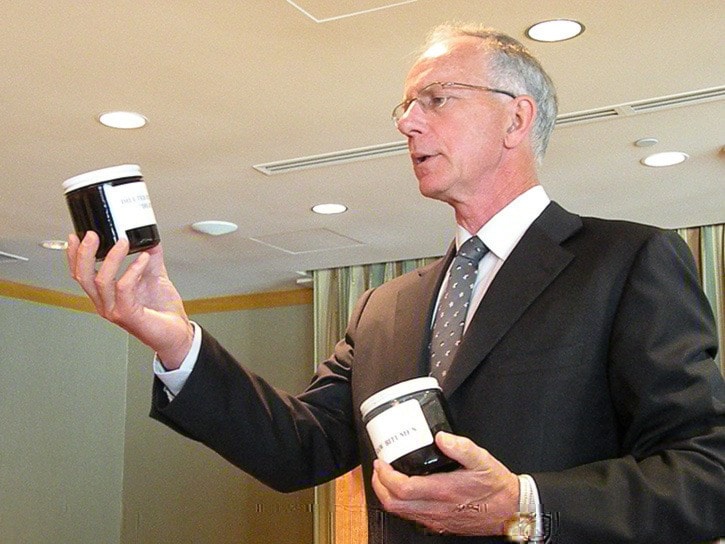THE PROPONENT of a plan to spend $22 billion to construct an oil refinery north of Kitimat along with associated works has sketched out a scenario to obtain environmental and other approvals within three years.
Speaking late last week, Kitimat Clean Ltd. president David Black said he can start working on the finer details of the project now that a 129-page comprehensive description of the project has been filed with federal and provincial regulators.
The filing on March 31 contains details on the refinery itself, which would be located on approximately 1,000 hectares of mostly Crown land 13 kilometres north of Kitimat, as well as on associated works such as rail spurs, a tank farm, a marine export terminal on the Douglas Channel near Kitimat, and on a 23-kilometre long corridor containing three pipelines to carry refined fuels from the refinery to the terminal for tanker export overseas. The raw product, Alberta oil sands bitumen, would be brought by rail to the refinery and turned into diesel, gasoline, jet fuel and some low-sulphur diesel.
Filing of the project description, which was produced by the firm of Hatch Ltd., now places in motion a series of events including public comment periods, contract signings and permit applications and approvals, said Black.
“Hatch really put its best people on this,” said Black of the project description document.
“I’m sure it’s going to be well accepted by both governments.”
Topping Black’s list is agreements with First Nations, primarily the Haisla of Kitamaat Village, on whose traditional territory the refinery would be located.
“There are some others, there are overlaps, but the Haisla are the main one,” he said.
“I think that the one thing we’ve learned in B.C. is that you can really do nothing unless you have First Nations,” Black added.
He said he’s had several sessions with the Haisla so far.
Gaining overall aboriginal approvals would include signing contracts for business and other economic opportunities arising from the project’s construction and operations.
While that kind of work is going on, Black said engineers will be advancing on the very detailed engineering work needed to establish exact project costs.
“That should take about two to two and a half years,” he estimated.
Black’s been selling the refinery project, officially introduced in 2012, as a nation-building exercise to add value to a raw resource rather than simply having bitumen exported for processing overseas.
The study forecasts taxation revenues of up to $1 billion a year for various levels of government and the creation of 1,250 direct jobs, 1,250 contract jobs tied to operations and thousands of indirect ones through the region.
A five-year construction window is forecast with as many as 7,000 workers needed as well as a large camp facility located at the refinery location.
At full capacity the refinery would process upwards of 400,000 barrels a day of bitumen, producing diesel, jet fuel and gasoline to be delivered to the marine export terminal via pipeline.
The fuels would be pumped aboard large tankers with one scheduled to leave the marine export terminal every four days for the trip to Asia.
When compared to existing refineries, this one, if constructed, would rank among the largest in the world.
As Black has been promoting the economic benefits of the project, he’s also been pointing to the shipping of refined fuels instead of crude.
Should there be a shipping accident, the Hatch report indicates refined fuels will evaporate, causing less of a problem compared to a spill of crude.
Absent from the project filing are plans for a natural gas pipeline to bring natural gas from northeastern B.C. to the refinery.
Natural gas is required as part of a specific refining process.
That process, called Fischer-Tropsch, would cost $5 billion of the proposed $22 billion capital cost.
Black said it will produce the cleanest diesel with far fewer emissions than conventional refineries.
“Our refinery would remove the equivalent C02 emissions of 6 million cars running full time,” he said.
The pipeline would be provided by a third party, Black said.
Black some time ago discarded the prospect of using a pipeline to deliver bitumen to the refinery.
He then contemplated using tanker cars into which heated bitumen would be poured and then let cool and harden before shipping.
In a hardened state, an accident involving bitumen would not be as environmentally hazardous, Black said.
But he is now worried that given the production capacity of the refinery, it will take too long for rail tanker cars to be reheated and the liquid bitumen emptied once they arrive at the refinery.
So he is contemplating placing large tubs of hardened bitumen on flatbed rail cars.
“That bitumen will be hardened. There’s no way we’d ship it in any other state,” said Black.
The bitumen would then be carved out of the tubs in some fashion and placed in large, heated vats where it can then be turned into a liquid form for processing.
“There are still some details to be worked out,” said Black.
Those rail cars would use the CN main line and then proceed south on the spur line connection toward Kitimat before being shunted off to a rail yard at the refinery location.
To date Black has been the sole investor of the project and has yet to attract large multi national energy companies who favour their own refineries elsewhere.
Black, the owner of Black Press, the newspaper company which owns The Terrace Standard and other northwestern B.C. newspapers, says he has spent millions of his own money so far, but declined to provide a figure.
